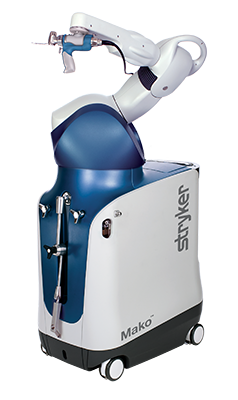Mako Robotics Overview
The CORE Institute Hospital » Services » Mako Robotics Overview
Robotic surgery gives physicians the tools to conduct minimally-invasive surgery with more precision and accuracy than traditional surgery.
At The CORE Institute Specialty Hospital, we use robotic surgery for partial knee, total knee and total hip replacements. We were the first hospital in the Southwest to perform a robotic total knee replacement procedure using the MAKO 2.0 surgical arm. This type of surgery typically results in faster recovery time, less blood loss, smaller incisions and less pain.
During minimally-invasive surgery, instruments are inserted into small holes in the body to perform a procedure. A camera is attached to one instrument to give the physician a 3D view of the surgical field. The addition of robotic technology to minimally-invasive surgery allows physicians to better plan for and perform joint replacements with greater accuracy. It gives surgeons better control of the surgery and a better view inside the body.
The first step in preparing for joint replacement surgery is to use a 3D image of the patient’s bone anatomy to create an individualized surgical plan. The MAKO system virtually balances the new joint during the surgical planning process to prepare for the most accurate positioning of the new joint. During the surgery, the MAKO 2.0 surgical arm is guided by the physician and the computerized surgical plan to achieve optimal joint placement.

Thousands of joint replacement procedures have been done with this robotic technology across the country. At The CORE Institute Specialty Hospital, robotic surgery helps us achieve excellent accuracy of joint placement, and patients report less recovery pain compared to manual procedures and higher satisfaction with the new joint. Once recovered, many patients find they forget about the new joint during normal daily activities.